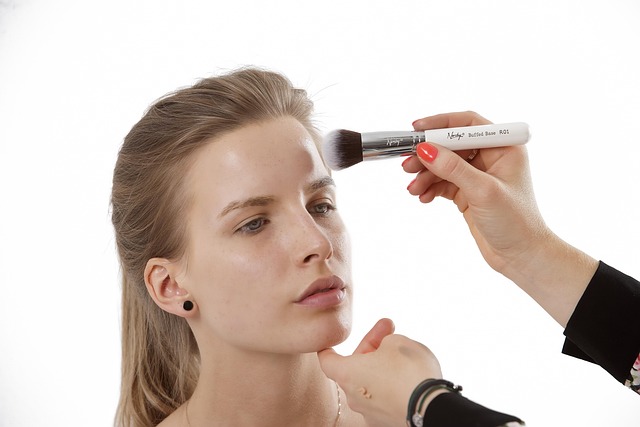Non-invasive body contouring, driven by advanced technologies like lasers, radiofrequency, and ultrasound, is transforming aesthetics by offering safe and effective fat reduction and skin tightening. These treatments, including popular methods like CoolSculpting and Ultherapy, cater to various concerns, from cellulite to stubborn fat bulges, without surgery or lengthy recovery periods. The global market for non-invasive body contouring is booming due to growing focus on well-being and confidence. Future trends include HIFU, electromagnetic energy, and AI integration for enhanced precision, personalization, and reduced risks, making these procedures more accessible and convenient for achieving desired body shapes.
Body reshaping treatments have evolved significantly, with non-invasive body contouring at the forefront of this transformation. This article delves into the world of modern aesthetics, exploring various techniques and procedures that offer precise, effective, and safe ways to achieve desired body contours. From understanding the science behind these treatments to weighing risks and rewards, we uncover the growing market’s trends and what lies ahead in non-invasive body contouring.
Understanding Non-Invasive Body Contouring: Unveiling the Techniques

Non-invasive body contouring has emerged as a game-changer in the world of aesthetic treatments, offering effective ways to sculpt and redefine one’s figure without the need for surgery or extended recovery periods. This innovative approach leverages advanced technologies to target specific areas of fat reduction and skin tightening, leading to a more toned and contoured silhouette. Techniques vary from device-based therapies that use focused energy to break down fat cells, to radiofrequency and ultrasound treatments that stimulate collagen production for improved skin texture and elasticity.
Each method has its unique benefits and is tailored to address different concerns, whether it’s reducing stubborn fat bulges, minimizing cellulite, or lifting and firming lax skin. The appeal of non-invasive body contouring lies in its convenience, safety, and minimal downtime. It allows individuals to achieve their desired body shape discreetly and effectively, without the invasiveness and risks associated with surgical procedures.
The Rise of Body Reshaping Treatments: A Growing Market

The demand for body reshaping treatments has skyrocketed in recent years, driven by a growing trend towards aesthetics and personal well-being. This shift is particularly evident in the rise of non-invasive body contouring procedures, which offer effective solutions for those seeking to improve their physical appearance with minimal downtime or recovery.
Non-invasive body contouring treatments leverage advanced technologies like lasers, radiofrequency, and ultrasound to target specific areas of fat reduction and skin tightening. As a result, these procedures have gained immense popularity compared to more invasive options. The global market for body contouring is expanding rapidly, reflecting the increasing confidence and willingness of individuals to invest in their physical transformations.
How Do These Treatments Work? Science Behind the Shaping

Body reshaping treatments, often centered around non-invasive body contouring, leverage scientific advancements to target specific fat cells and enhance the body’s natural metabolic processes. These treatments use technologies like radiofrequency, laser, or ultrasound to stimulate collagen production and break down adipose tissue. By increasing collagen synthesis, these procedures promote skin firming and tightening, while targeted fat cell destruction leads to a reduction in problem areas. The science behind non-invasive body contouring lies in its ability to selectively heat the subcutaneous tissues, causing localized cellular responses that result in both fat reduction and improved skin tone.
Exploring Popular Non-Surgical Procedures for Contouring

Non-surgical procedures for body contouring have gained significant popularity in recent years, offering a safer and more comfortable alternative to invasive methods. These treatments leverage advanced technologies to target specific areas of fat and improve skin elasticity, resulting in a reshaped and toned appearance. One of the most sought-after non-invasive body contouring techniques is CoolSculpting, which uses cryolipolysis to freeze and eliminate stubborn fat cells without any downtime or surgery.
Another notable procedure is Ultherapy, a type of ultrasound therapy that stimulates collagen production in the skin, leading to improved firmness and elasticity. For those seeking to reduce cellulite, Mesotherapy stands out, involving the injection of a mixture of medications into problem areas to break down fat and improve skin texture. Each of these procedures has its unique benefits and is tailored to address different concerns, making non-invasive body contouring accessible and effective for many individuals looking to achieve their desired physique.
Benefits and Considerations: Weighing the Risks and Rewards

Body reshaping treatments, especially non-invasive body contouring techniques, have gained popularity for their potential to transform one’s physique. These procedures offer numerous benefits, including reducing unwanted fat, toning muscles, and improving overall body composition. They are often sought after by individuals aiming to enhance their self-confidence and achieve a more aesthetically pleasing figure without the need for extensive surgery or downtime.
However, as with any cosmetic procedure, there are risks and considerations to keep in mind. Non-invasive treatments may have side effects, such as temporary redness, swelling, or discomfort. It’s crucial to understand that results can vary from person to person, and multiple sessions might be required to achieve the desired outcome. Consulting a qualified medical professional is essential to determine the suitability of these treatments for your specific needs, ensuring you make an informed decision while balancing the rewards against any potential risks.
Future Trends in Body Contouring: What to Expect Next

The future of body contouring is promising, with a growing focus on non-invasive procedures that offer both safety and effectiveness. Technologies such as high-intensity focused ultrasound (HIFU) and electromagnetic energy are gaining traction for their ability to target and break down fat cells without incisions or recovery time. These advancements are particularly appealing as they allow for more accessibility and convenience, enabling individuals to achieve their desired body shape in a less invasive manner.
Additionally, the integration of artificial intelligence (AI) is expected to enhance precision and personalisation in body contouring treatments. AI-driven systems can analyse a patient’s anatomy, predict outcomes, and tailor treatment plans accordingly. This level of customisation promises optimal results while minimising risks, marking a significant step forward in the industry.
